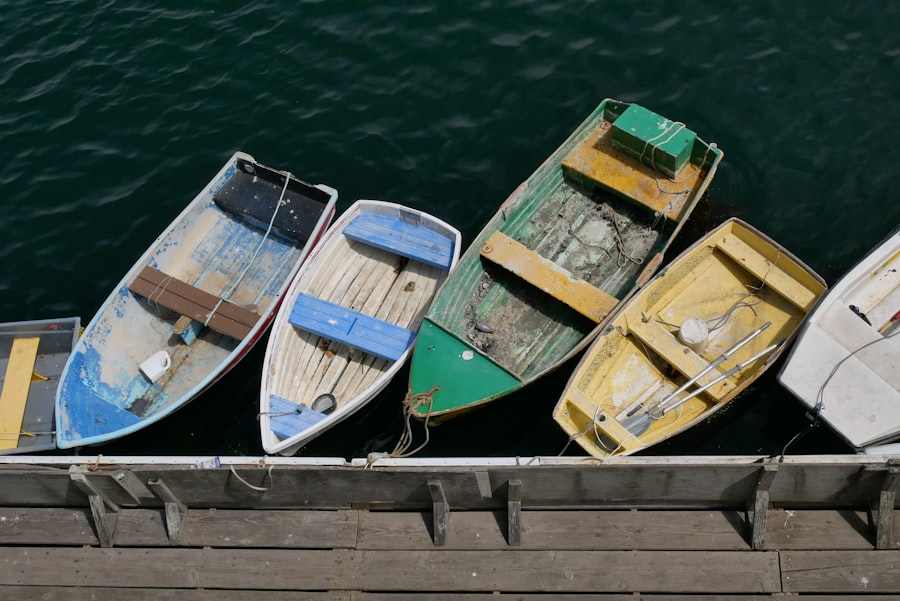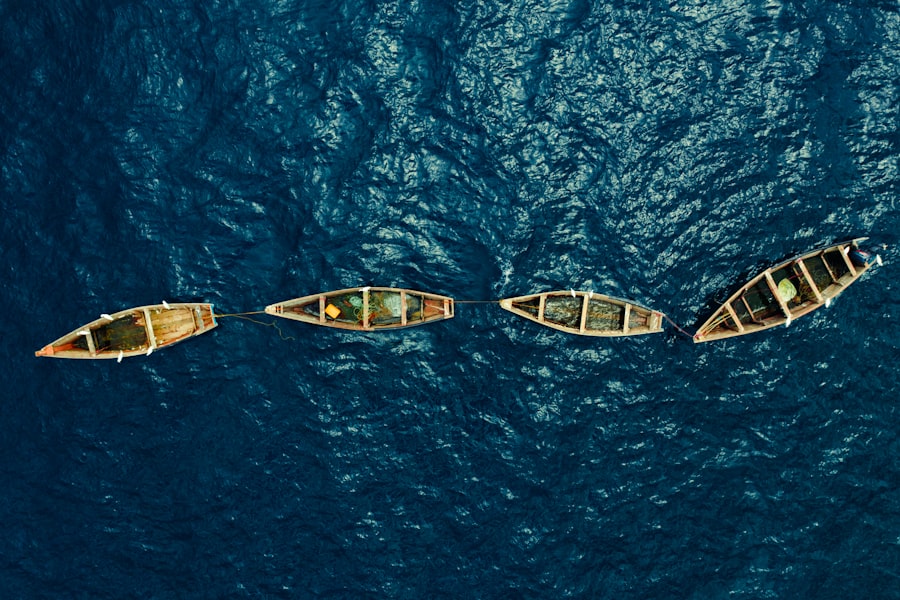The history of skiff boats is a fascinating journey that reflects the evolution of maritime technology and the diverse needs of seafarers. Skiffs have their roots in the small, lightweight boats used by fishermen and coastal communities for centuries. The term “skiff” is believed to have originated from the Dutch word “schip,” which means ship, and it has been adapted over time to describe various types of small boats.
In the early days, skiffs were primarily constructed from wood, utilizing local timber and traditional boat-building techniques. These vessels were designed for shallow waters, allowing fishermen to navigate estuaries, rivers, and coastal areas with ease. As maritime trade expanded and the demand for efficient transportation grew, skiffs evolved to meet these needs.
By the 19th century, skiffs had become popular among recreational boaters as well. The introduction of steam power and later, gasoline engines, transformed skiff design, allowing for greater speed and maneuverability. The classic flat-bottomed skiff became a staple in American waterways, particularly in the southern states where they were used for fishing and hunting.
Over time, materials such as fiberglass and aluminum began to replace wood, leading to lighter, more durable designs that could withstand the rigors of various environments.
Key Takeaways
- Skiff boats have a rich history and come in various types suited for different water conditions.
- They are used in diverse environments, from calm lakes to coastal waters, for fishing, transport, and recreation.
- Skiffs offer advantages like stability and ease of use but also have limitations such as limited capacity.
- Customization options allow owners to tailor skiffs for specific needs and activities.
- Ongoing innovations focus on improving design, materials, and functionality for future skiff models.
Different Types of Skiff Boats
Skiff boats come in a variety of designs, each tailored to specific uses and environments. One of the most common types is the flat-bottom skiff, which is characterized by its wide beam and shallow draft. This design allows for stability in calm waters and makes it ideal for fishing in shallow bays or rivers.
Flat-bottom skiffs are often used in freshwater environments, where their ability to navigate through weeds and marshes is a significant advantage. They are typically powered by small outboard motors or can be rowed manually, making them versatile for different users. Another popular type is the V-hull skiff, which features a pointed bow and a deeper hull that cuts through waves more effectively.
This design is particularly suited for open water conditions, where rougher seas are common. V-hull skiffs are often used for offshore fishing or recreational boating in coastal areas. They provide a smoother ride in choppy waters compared to their flat-bottom counterparts.
Additionally, there are specialized skiffs designed for specific activities such as duck hunting or crabbing, which may include features like built-in storage compartments or camouflage paint jobs to blend into natural surroundings.
Uses of Skiff Boats in Different Environments

Skiff boats are incredibly versatile and can be utilized in a wide range of environments, from tranquil lakes to bustling coastal waters. In freshwater settings, skiffs are often employed by anglers seeking to access remote fishing spots that larger boats cannot reach. Their shallow drafts allow them to glide over submerged vegetation and navigate narrow channels with ease.
For instance, in the Florida Everglades, skiffs are commonly used to fish for species like tarpon and snook, where traditional boats would struggle due to the dense mangroves and shallow waters. In saltwater environments, skiffs serve multiple purposes beyond fishing. They are frequently used for recreational activities such as water skiing or tubing due to their stability and ease of handling.
Coastal communities often rely on skiffs for transportation between islands or as support vessels for larger boats. In places like the Caribbean, skiffs are essential for accessing remote beaches or conducting eco-tours in mangrove forests. Their lightweight design allows them to be easily launched from beaches or docks, making them a popular choice among local fishermen and tourists alike.
Advantages and Disadvantages of Skiff Boats
| Aspect | Advantages | Disadvantages |
|---|---|---|
| Stability | Generally stable in calm waters due to flat bottom design | Less stable in rough or choppy waters compared to V-hull boats |
| Weight | Lightweight and easy to transport or carry | Lightweight construction may be less durable in harsh conditions |
| Draft | Shallow draft allows access to shallow waters and easy beaching | Not suitable for deep water or heavy wave conditions |
| Speed | Efficient for slow to moderate speeds, ideal for fishing and leisure | Not designed for high-speed travel or long-distance cruising |
| Capacity | Can carry multiple passengers or gear depending on size | Limited capacity compared to larger boats |
| Cost | Generally affordable and low maintenance | May require frequent repairs if used in rough conditions |
| Versatility | Suitable for fishing, hunting, and recreational use | Limited use in commercial or heavy-duty applications |
Skiff boats offer numerous advantages that make them appealing to a wide range of users. One of the primary benefits is their affordability; skiffs are generally less expensive than larger boats, making them accessible to novice boaters or those on a budget. Their lightweight construction also means they can be easily transported on trailers, allowing owners to explore different waterways without the need for a permanent dock.
Additionally, skiffs are relatively easy to operate, making them an excellent choice for beginners who may not have extensive boating experience. However, skiff boats do come with certain disadvantages that potential owners should consider. One significant limitation is their size; while they excel in shallow waters, they may not be suitable for rough seas or long-distance travel.
Skiffs typically have limited storage space compared to larger vessels, which can be a drawback for those planning extended trips or requiring additional gear. Furthermore, their lightweight design can make them susceptible to being blown off course by strong winds, necessitating careful navigation in open water conditions.
Customization Options for Skiff Boats
Customization is one of the most exciting aspects of owning a skiff boat, as it allows owners to tailor their vessels to meet specific needs and preferences. Many manufacturers offer a range of options that can enhance both functionality and aesthetics. For instance, owners can choose different hull colors or finishes to personalize their skiff’s appearance.
Additionally, various seating configurations can be selected based on how many passengers will typically be aboard or what activities will be undertaken. Beyond cosmetic changes, functional upgrades can significantly improve a skiff’s performance. Owners may opt for enhanced storage solutions such as built-in compartments for fishing gear or coolers for keeping catches fresh.
Electronics packages can also be added, including fish finders or GPS systems that aid navigation and improve fishing success rates. Some enthusiasts even choose to install specialized equipment like trolling motors or live wells to enhance their fishing capabilities further.
Maintenance and Care for Skiff Boats

Proper maintenance is crucial for ensuring the longevity and performance of skiff boats. Regular cleaning is essential to prevent the buildup of saltwater residue or algae growth, especially for those used in marine environments. After each outing, it is advisable to rinse the boat thoroughly with fresh water to remove any contaminants that could lead to corrosion or damage over time.
For wooden skiffs, periodic inspections for signs of rot or wear are necessary; applying protective coatings can help preserve the wood’s integrity. In addition to cleaning, routine mechanical checks should be performed on outboard motors and other equipment. This includes checking oil levels, inspecting fuel lines for leaks, and ensuring that all electrical systems are functioning correctly.
Seasonal maintenance is also recommended; before launching in spring or after winter storage, it’s wise to conduct a comprehensive inspection of the hull and motor. Keeping detailed records of maintenance activities can help owners track repairs and replacements over time.
Popular Activities for Skiff Boat Enthusiasts
Skiff boat enthusiasts engage in a variety of activities that highlight the versatility of these vessels. Fishing remains one of the most popular pastimes associated with skiffs; anglers appreciate their ability to access hard-to-reach spots where larger boats cannot venture. Whether casting lines in freshwater lakes or navigating coastal waters for saltwater species, skiffs provide an intimate fishing experience that many find rewarding.
Beyond fishing, many skiff owners enjoy recreational activities such as exploring scenic waterways or participating in water sports like wakeboarding or tubing. The stability of skiffs makes them suitable for family outings where children can safely enjoy water activities under adult supervision. Additionally, some enthusiasts take part in organized events such as skiff races or community gatherings that celebrate boating culture and foster camaraderie among fellow boaters.
Future Innovations in Skiff Boat Design
The future of skiff boat design is poised for exciting innovations driven by advancements in technology and changing consumer preferences. One area seeing significant development is the integration of eco-friendly materials into boat construction. Manufacturers are exploring sustainable options such as recycled plastics and bio-based composites that reduce environmental impact while maintaining durability and performance.
Another promising trend is the incorporation of smart technology into skiff designs. Features such as integrated navigation systems with real-time weather updates or automated safety systems could enhance user experience significantly. Electric propulsion systems are also gaining traction; these quieter engines not only reduce emissions but also offer lower operating costs over time.
As boating enthusiasts become more environmentally conscious, innovations that prioritize sustainability will likely shape the future landscape of skiff boats. In conclusion, skiff boats represent a rich tapestry woven from history, innovation, and community engagement. Their adaptability across various environments makes them a beloved choice among recreational boaters and fishermen alike.
As technology continues to evolve and consumer demands shift towards sustainability and efficiency, the future holds great promise for these versatile vessels.


